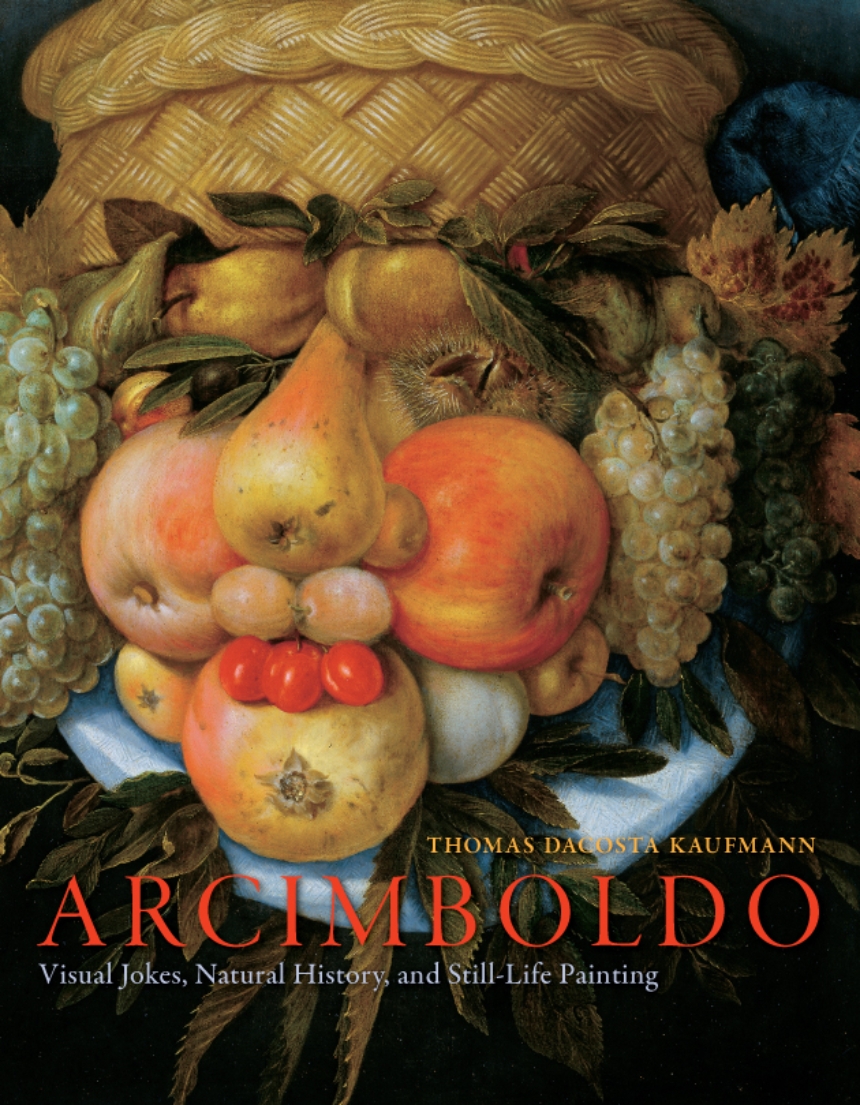Arcimboldo
Visual Jokes, Natural History, and Still-Life Painting
In Giuseppe Arcimboldo’s most famous paintings, grapes, fish, and even the beaks of birds form human hair. A pear stands in for a man’s chin. Citrus fruits sprout from a tree trunk that doubles as a neck. All sorts of natural phenomena come together on canvas and panel to assemble the strange heads and faces that constitute one of Renaissance art’s most striking oeuvres. The first major study in a generation of the artist behind these remarkable paintings, Arcimboldo tells the singular story of their creation.
Drawing on his thirty-five-year engagement with the artist, Thomas DaCosta Kaufmann begins with an overview of Arcimboldo’s life and work, exploring the artist’s early years in sixteenth-century Lombardy, his grounding in Leonardesque traditions, and his tenure as a Habsburg court portraitist in Vienna and Prague. Arcimboldo then trains its focus on the celebrated composite heads, approaching them as visual jokes with serious underpinnings—images that poetically display pictorial wit while conveying an allegorical message. In addition to probing the humanistic, literary, and philosophical dimensions of these pieces, Kaufmann explains that they embody their creator’s continuous engagement with nature painting and natural history. He reveals, in fact, that Arcimboldo painted many more nature studies than scholars have realized—a finding that significantly deepens current interpretations of the composite heads.
Demonstrating the previously overlooked importance of these works to natural history and still-life painting, Arcimboldo finally restores the artist’s fantastic visual jokes to their rightful place in the history of both science and art.
Reviews
Table of Contents
Table of Illustrations
Preface and Acknowledgments
Introduction
1 Arcimboldo’s Lombard Origins
2 Arcimboldo from 1562: The Creation of Composite Heads
3 Learning, Poetry, and Art
4 Serious Jokes
5 Natural Philosophy, Natural History, and Nature Painting
6 Nature Studies
7 Arcimboldo and the Origins of Still Life
8 Arcimboldo’s Paradoxical Paintings and the Origins of Still Life
Conclusion: Arcimboldo in the History of Art
Appendix 1. Arcimboldo, the Facchini, and Popular Culture
Appendix 2. Arcimboldo and Meda at Monza
Appendix 3. Concordance of Arcimboldo Images from the Aldrovandi Letter, Bologna, Biblioteca Universitaria, Dresden Kupferstich-Kabinett CA 213, Vienna (cod. min. 42) and the “Museum” of Rudolf II (Österreichische Nationalbibliothek, cod. min. 129 and 130)
Notes
Bibliography
Index
